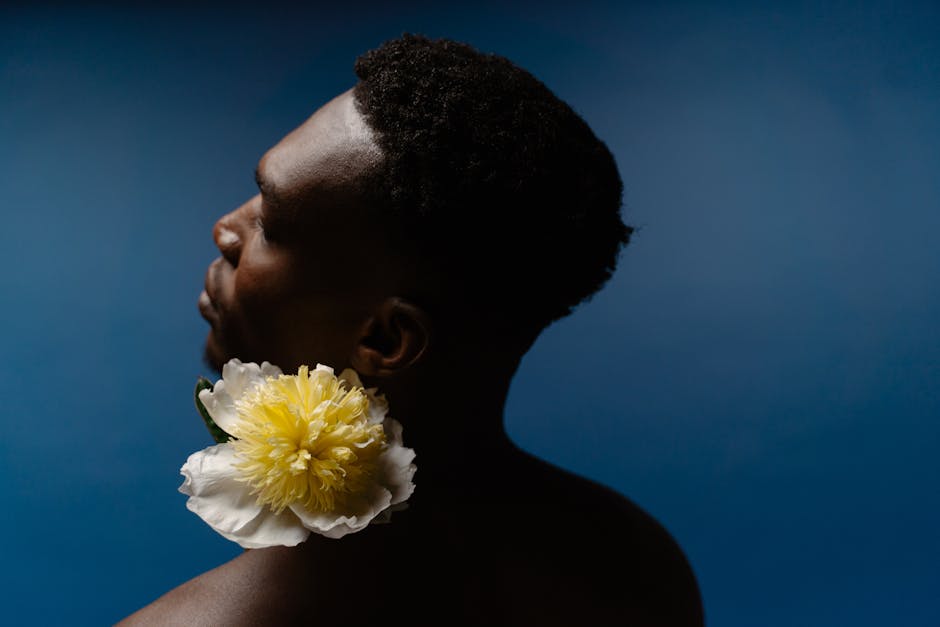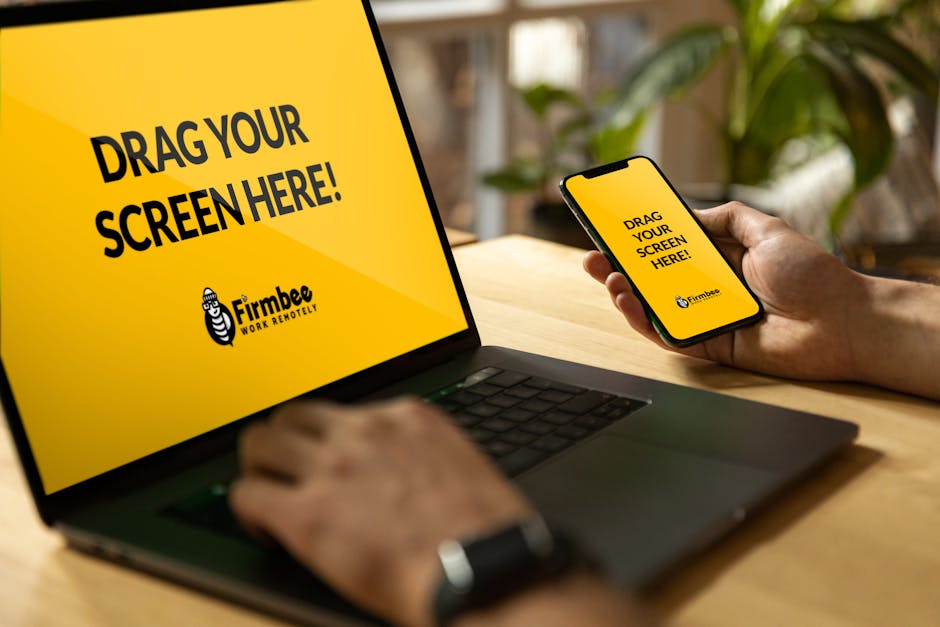As we navigate through 2025, UX design trends continue to evolve at an unprecedented pace, reshaping how users interact with digital products and services. The landscape of UX design in 2025 is characterized by a blend of technological innovation, ethical considerations, and human-centered approaches that prioritize meaningful connections. These UX design trends reflect not just aesthetic preferences but deeper shifts in how we conceptualize the relationship between humans and technology.
For businesses and designers looking to stay ahead of the curve, understanding these UX design trends is crucial for creating digital experiences that resonate with users and stand out in an increasingly crowded marketplace. This comprehensive guide explores the most significant UX design trends of 2025, offering insights into how they’re transforming the industry and practical tips for implementation.
AI-Driven Personalization: The New Frontier of User Experience

Photo by Google DeepMind on Pexels
Artificial intelligence has transcended its role as a buzzword to become a fundamental component of UX design in 2025. The integration of AI into digital products has evolved significantly, moving beyond basic automation to deliver truly personalized experiences that adapt to individual user behaviors and preferences.
Today’s AI-powered UX systems can analyze vast amounts of user data to predict needs, customize interfaces, and create dynamic content that resonates on a personal level. This level of personalization creates a more intuitive and engaging user experience, as products seem to understand and anticipate what users want before they even express it.
What makes the 2025 approach to AI in UX design distinct is the emphasis on transparency and user control. As users have become more aware of data privacy concerns, successful implementations now clearly communicate how AI is being used and give users meaningful options to customize their experience. This ethical approach to AI integration builds trust while still delivering the benefits of personalization.
For example, content platforms now offer AI-curated experiences that adapt to viewing habits while explicitly explaining recommendation algorithms and allowing users to adjust parameters. E-commerce sites implement AI that learns from browsing patterns to highlight relevant products without creating the unsettling feeling of being watched.
The most successful applications of AI in UX design are those that enhance the human experience rather than replace it. The goal is to use AI as a tool that empowers users and removes friction points, creating experiences that feel both magical and trustworthy.
Sustainable UX Design: Eco-Conscious Digital Experiences

Photo by Marina Leonova on Pexels
In 2025, sustainability has become a core consideration in UX design, reflecting growing awareness that digital products have real environmental impacts. Sustainable UX design encompasses practices that minimize the ecological footprint of digital experiences while maintaining high usability standards.
Digital sustainability starts with energy efficiency. Designers are now optimizing interfaces to reduce processing power requirements, implementing dark mode as the default to save battery life on OLED screens, and creating streamlined experiences that accomplish tasks with minimal server requests. These optimizations not only reduce carbon emissions but often result in faster, more efficient user experiences.
Beyond technical considerations, sustainable UX design in 2025 also means creating digital products that encourage environmentally responsible behaviors. This includes designing features that help users track and reduce their own environmental impact, implementing gamification elements that reward sustainable choices, and creating interfaces that make eco-friendly options the most visually prominent and accessible.
The sustainable design movement has also influenced aesthetic choices, with many brands adopting nature-inspired color palettes, organic shapes, and minimalist layouts that require less processing power to render. These design elements not only reduce environmental impact but also create a visual language that communicates brand values aligned with sustainability.
Companies that have embraced sustainable UX design are finding that it resonates strongly with users who increasingly make purchasing decisions based on environmental considerations. By making sustainability a central pillar of their UX strategy, these organizations are building stronger connections with their audience while contributing to broader environmental goals.
Immersive 3D and Spatial Experiences

Photo by Google DeepMind on Pexels
The boundary between digital and physical experiences continues to blur in 2025, with immersive 3D elements and spatial design becoming mainstream UX approaches. No longer limited to gaming or specialized applications, these technologies are now fundamental components of everyday digital interactions.
Interactive 3D objects have evolved from decorative elements to functional components that enhance usability and engagement. Product pages feature manipulable 3D models that allow users to examine items from all angles before purchase. Educational platforms use interactive 3D visualizations to explain complex concepts, making learning more intuitive and memorable. These elements create a sense of presence and tangibility that flat designs simply cannot match.
Augmented reality (AR) and virtual reality (VR) have matured into practical UX tools rather than novelties. AR overlays now help users navigate physical spaces, visualize products in their own environments, and access contextual information about their surroundings. VR creates fully immersive environments for training, collaboration, and experiences that would be impossible or impractical in the physical world.
Spatial design principles have influenced even 2D interfaces, with designers creating depth and dimension through layering, parallax effects, and thoughtful use of shadow and light. These techniques create a sense of physical space within digital environments, making navigation more intuitive by leveraging users’ real-world spatial reasoning abilities.
What makes the 2025 approach to immersive design particularly effective is its thoughtful implementation. Rather than using 3D and spatial elements simply because they’re possible, successful designs integrate these features in ways that genuinely enhance the user experience, making interactions more natural, intuitive, and engaging.
Ethical UX and Inclusive Design

Photo by Marcus Aurelius on Pexels
In 2025, ethical considerations and inclusivity have moved from supplementary concerns to core principles of UX design. This shift reflects growing recognition that digital products should be designed to serve all users fairly and respectfully, regardless of their abilities, backgrounds, or circumstances.
Accessibility has become non-negotiable, with designers implementing robust features that ensure digital experiences work for users with visual, auditory, motor, or cognitive disabilities. This includes high-contrast modes, screen reader compatibility, alternative navigation methods, and simplified interfaces for users who may be overwhelmed by complexity. The most forward-thinking organizations now view accessibility not as a compliance requirement but as an opportunity to create better experiences for everyone.
Cultural inclusivity has also gained prominence, with UX designers creating experiences that resonate across diverse cultural contexts. This means moving beyond simple translation to consider how different cultures interpret visual cues, interact with technology, and process information. Successful global products now adapt not just language but imagery, examples, and even interaction patterns to feel natural and respectful to users from various cultural backgrounds.
Perhaps most significantly, 2025 has seen the rise of what some call “respectful UX” – design approaches that explicitly reject manipulative patterns in favor of transparent, user-empowering interactions. This means eliminating dark patterns that trick users into unintended actions, providing clear information about how data is used, and designing business models that align company success with genuine user benefit rather than exploitation.
Organizations that have embraced ethical UX and inclusive design are finding that these approaches build stronger, more trusting relationships with users while expanding their potential audience. By designing with respect for all users, these companies are creating experiences that not only perform better but contribute to a more equitable digital landscape.
Minimalist Design with Personality

Photo by cottonbro studio on Pexels
The minimalist design philosophy has evolved significantly in 2025, moving beyond stark simplicity to embrace what might be called “expressive minimalism” – clean, uncluttered interfaces that nonetheless convey distinct personality and emotional resonance.
This new approach to minimalism maintains the focus on essential elements and reduced cognitive load that has long made minimalist design effective. Interfaces still prioritize functionality and clarity, removing unnecessary decorative elements that might distract from core tasks. However, today’s minimalist designs are far from sterile or generic.
Personality is injected through thoughtful use of distinctive typography, strategic color accents, subtle animations that reflect brand character, and carefully selected imagery that carries emotional weight. These elements are used sparingly but intentionally, creating memorable experiences without overwhelming users.
Modern skeuomorphism has made a surprising comeback in this context, with designers incorporating subtle real-world textures and behaviors that create a sense of familiarity and tactility. Unlike the heavy-handed skeuomorphism of earlier decades, these elements are implemented with restraint, adding just enough physical-world reference to make interfaces feel warm and intuitive.
The most successful implementations of expressive minimalism create interfaces that feel simultaneously efficient and human. They accomplish tasks with minimal friction while still creating emotional connections with users. This balance is particularly valuable in a digital landscape where many products offer similar functionality, making emotional resonance and brand personality key differentiators.
Voice and Multimodal Interfaces

In 2025, voice interfaces have matured from novelty to necessity, becoming a standard component of comprehensive UX design. The evolution of natural language processing has made voice interactions more intuitive and reliable, while changing user expectations have made voice functionality an expected feature across digital products.
What’s particularly notable about the 2025 approach to voice UX is the shift toward multimodal interfaces that seamlessly blend voice with visual, touch, and even gestural interactions. Users now routinely begin tasks with voice commands, continue them through touch or gesture, and complete them with another modality entirely. This flexibility allows users to choose the most appropriate interaction method for their current context, whether they’re driving, cooking, working in a quiet environment, or dealing with accessibility challenges.
Designing effective multimodal experiences requires a holistic approach that considers how different interaction methods complement each other. Voice interfaces are now designed with visual companions that provide confirmation and additional context. Touch interfaces incorporate voice shortcuts for complex actions. The goal is creating coherent experiences that feel natural regardless of how users choose to interact.
Personalization has become central to voice UX, with systems adapting to individual speech patterns, vocabularies, and preferences. This customization makes voice interactions feel more natural and reduces friction, particularly for users with accents or speech patterns that traditional voice recognition systems struggled to interpret.
Privacy considerations have also evolved, with transparent controls that give users clear understanding of when and how their voice is being processed. The most trusted voice interfaces now process commands locally when possible and provide explicit indicators when audio is being transmitted to remote servers.
Micro-Interactions and Animation with Purpose

Photo by Mikhail Nilov on Pexels
In 2025, micro-interactions and animations have transcended their decorative origins to become essential components of functional, communicative UX design. These subtle movements and responses serve as a digital body language that guides users, provides feedback, and creates emotional connections.
Effective micro-interactions now serve multiple purposes simultaneously. They confirm user actions, making interfaces feel responsive and reliable. They guide attention to important elements at precisely the right moment. They communicate brand personality through distinctive movement qualities. Perhaps most importantly, they create moments of delight that transform routine tasks into memorable experiences.
Animation in 2025 UX design is characterized by its intentionality and restraint. Rather than implementing movement for its own sake, designers carefully consider the purpose of each animation and its contribution to the overall user experience. This purposeful approach prevents the performance issues and user fatigue that can result from excessive animation.
Text transitions have emerged as a particularly effective application of animation, with subtle movements that guide users between content states while maintaining context. These transitions help users understand relationships between different pieces of information and create a sense of narrative flow through digital experiences.
The technical implementation of micro-interactions has also evolved, with designers leveraging hardware capabilities to create more natural-feeling responses. Haptic feedback, spatial audio, and adaptive animations that respond to device orientation all contribute to creating more immersive, physically intuitive digital experiences.
Data Visualization and Information Design

Photo by Google DeepMind on Pexels
As digital experiences become increasingly data-driven in 2025, the art and science of data visualization has taken center stage in UX design. The ability to transform complex information into intuitive, actionable insights has become a critical skill for designers working across virtually all sectors.
Modern data visualization goes far beyond basic charts and graphs, embracing interactive elements that allow users to explore information at their own pace and according to their own interests. These interactive visualizations enable users to discover patterns, make comparisons, and draw conclusions that might be impossible with static presentations.
Personalization has become a key component of effective data visualization, with systems adapting to individual user needs and preferences. Financial dashboards adjust to highlight metrics relevant to specific investment strategies. Health applications present data differently based on user goals and literacy levels. This customization makes complex information more accessible and actionable for diverse users.
Narrative techniques have been integrated into data presentations, guiding users through information in ways that build understanding progressively. Rather than overwhelming users with all available data at once, these narrative visualizations introduce concepts sequentially, building context and highlighting relationships between different data points.
Accessibility considerations have transformed how data is presented, with designers implementing multiple representation methods to ensure information is perceivable by all users. Color-blind friendly palettes, alternative text descriptions of visual patterns, and options to access raw data all contribute to more inclusive information design.
Conclusion: Embracing the Future of UX Design

Photo by Impact Dog Crates on Pexels
The UX design trends of 2025 reflect a maturing industry that balances technological innovation with human needs and ethical considerations. From AI-driven personalization to sustainable design practices, these trends share a common thread: they aim to create digital experiences that are not just usable but meaningful, responsible, and emotionally resonant.
For organizations looking to implement these UX design trends, the key is thoughtful integration rather than adoption for its own sake. Each trend should be evaluated based on its potential to solve real user problems and advance business objectives. The most successful digital experiences of 2025 will be those that selectively implement these trends in service of a coherent, user-centered vision.
As we look toward the future, it’s clear that UX design will continue to evolve in response to changing technologies, user expectations, and societal values. The designers and organizations that thrive will be those that remain adaptable, ethically grounded, and relentlessly focused on creating experiences that enhance human life in meaningful ways.
At InnExo, we believe that next-level innovation starts with understanding these emerging UX design trends and applying them thoughtfully to create digital experiences that truly matter. By embracing these forward-thinking approaches while staying true to fundamental human needs, we can shape a digital future that’s not just functional but genuinely enriching.
Sources
- https://trends.uxdesign.cc
- https://careerfoundry.com/en/blog/product-design/product-design-trends/
- https://www.uxdesigninstitute.com/blog/ux-design-trends-in-2025/
- https://www.nngroup.com/articles/ux-reset-2025/
- https://www.uxstudioteam.com/ux-blog/ui-trends-2019





